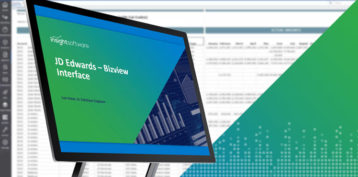JD Edwards Insights from OpenWorld

At the last Oracle OpenWorld conference held in Fall 2019, there were two distinctly different messages. In many of the big speeches and breakout sessions, the company extolled the virtues of the cloud. Elsewhere, though, the company talked a lot about on-premises applications and for obvious reasons. Many Oracle users still use them and have plans to continue to invest and upgrade them over the coming years.
Though Oracle has a cloud-dominant agenda, the company quietly announced plans at OpenWorld to extend support for E-Business Suite, JD Edwards, and PeopleSoft for a rolling 10-year period starting now, which, for all intents and purposes, means into perpetuity. Oracle wouldn’t make this commitment without a dedicated user base eager to maintain the status quo. While the extended support comes as a welcome announcement, it raises a beguiling question. Why are companies in 2020 still resisting the cloud?
Why ERP Remains On-Premises
Many of the people I spoke to at OpenWorld feel strongly about keeping ERP on-premises, but were more open to moving human resources or other functions to the cloud. Though that may seem odd at first, it is because companies treat their financial data differently. They may be willing to experiment with the cloud in other parts of their business, but they feel that they can’t put the quality, consistency, security, or availability of financial data in jeopardy. Thus, it remains on-premises. Unless there is a very strong compelling reason to move their financials onto a cloud financial platform, companies will not take the risk.
In addition, from speaking with prospects as they battle through this COVID-19 global pandemic, we are hearing that many organizations that had planned to do ERP transformations to cloud or upgrade their existing on-premises application have postponed those investments and pushed them out by a lengthy period. If a company can do that, you would have to ask what was the compelling reason driving them to add that initiative to their roadmap.
The maturity of cloud ERP is another issue with slowing rates of adoption. Cloud ERP has come a long way in recent years in terms of functionality and security. However, even the biggest evangelists would admit it’s not 100 percent mature yet. Out of a mixture of caution and patience, many companies are willing to wait for cloud ERP to fully mature and remain on-premises until then.
Customization can’t be discounted either. Many companies have carefully personalized their ERP over the years to fit their unique financial function. Cloud ERP cannot adapt in the same ways, and even if it could, adjusting everything in the midst of a major data migration requires an intensive effort. For some, making do with the ERP they have looks more appealing than trying to adapt to a (largely) one-size-fits-all cloud solution.
These challenges likely explain why many companies continue to invest in their on-premises ERP and will for years to come. Instead of trying to adapt to something new, these companies may plan to optimize what they already have.
Making Something Exceptional Out of On-Premises ERP
Users who love their on-premises ERP don’t have to make major changes, but they shouldn’t resist change either. As companies become more data-driven, especially in terms of finance, old approaches require review and revision if not outright replacement.
The hybrid cloud represents one option: using on-premises ERP combined with cloud-based applications like procure to pay, project management, or supply chain management cloud. This encompasses a broad range of areas including quality management, which lends itself to a cloud approach. This approach offers the best of both worlds when done well, but that doesn’t mean it’s easy to calibrate and maintain a hybrid IT infrastructure indefinitely.
Another option is to supplement on-premises JD Edwards ERP to make up for missing or underpowered features. For example, a dedicated financial reporting tool makes it easy to extract data from the ERP in the form of tailor-made insights. It is true and fair to say that whether your ERP is on-premises or cloud, all of them lack the ability to give finance end-users a solid experience when it comes to financial and operational reporting. Companies don’t need to move to the cloud and disrupt the foundations of finance just to improve financial transparency and data-driven decision making. They can achieve the same thing in a fraction of the time, at a lower cost, and with lesser disruption by simply adding to their on-premises toolkit.
When you’re ready to get started, download our whitepaper and learn how to take JD Edwards Reporting to the next level.







